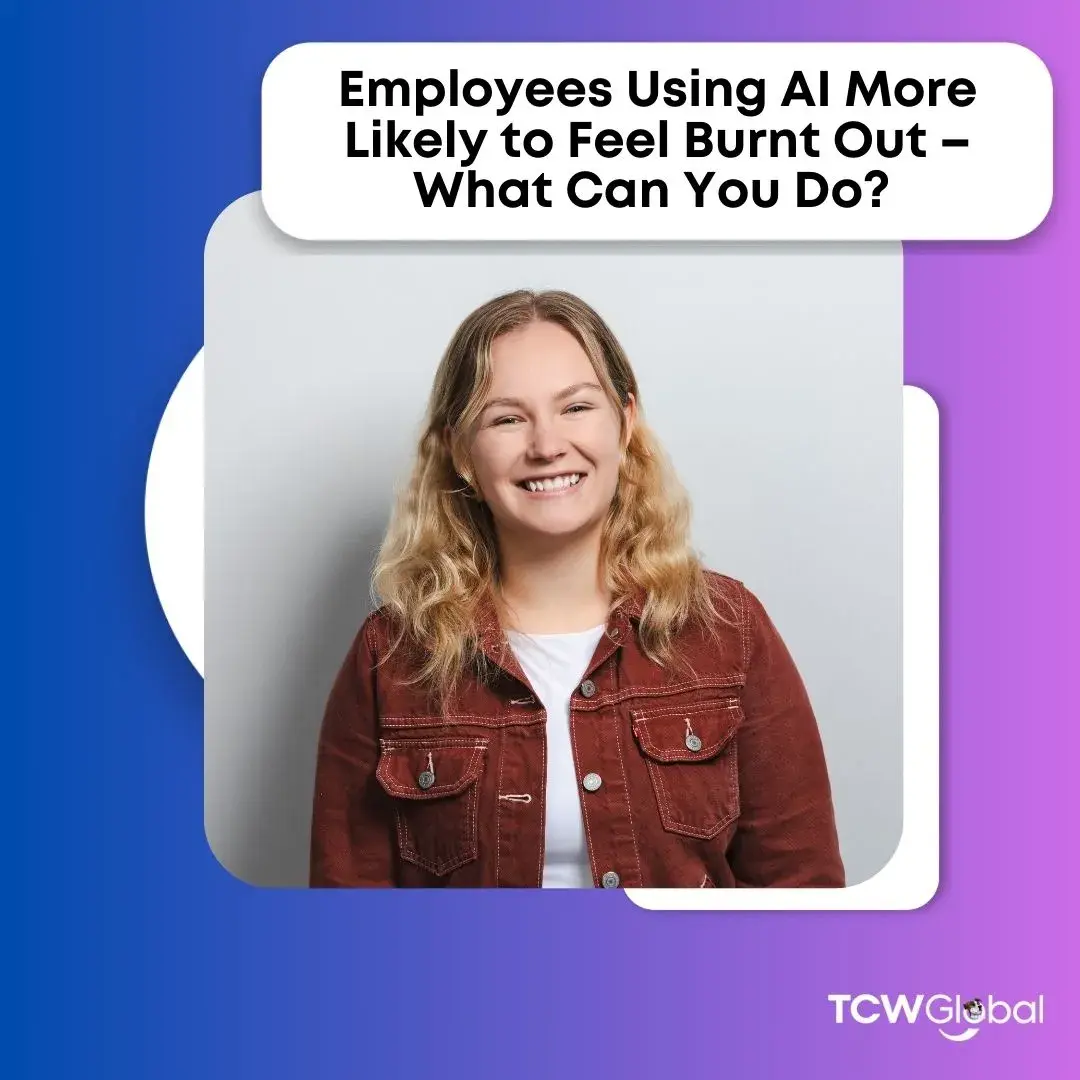Employees Using AI More Likely to Feel Burnt Out – What Can You Do?
July 2, 2024

Imagine this: You’re handed a magical tool that promises to revolutionize your work — making everything faster, smarter, and easier. You eagerly integrate it into your daily routine, expecting a boost in productivity and efficiency. But instead, you find yourself more burnt out than ever before. How can this be?
In this article, we’re going to explore the surprising new discovery that employees who frequently use AI are experiencing higher burnout levels than their non-AI-savvy counterparts. We'll explore the reasons behind this trend and provide strategies to help your organization navigate and mitigate AI-induced burnout.
Quick Overview
- What is Burnout?
- Who Feels Burnt Out?
- How Does AI Relate to Burnout?
- How Does AI Contribute to Burnout?
- What Can You Do About It?
- Need Help?
What is Burnout?
Burnout is not just stress, and it’s not caused by a lack of caffeine. Burnout is a state of physical, emotional, and mental exhaustion caused by prolonged stress and overwork. According to the World Health Organization (WHO), people experiencing burnout:
- Have persistent fatigue,
- Feel emotionally detached or negative about their job,
- Have decreased productivity.
Who Feels Burnt Out?
Quantum Workplace’s 2024 Employee Engagement Trends Report, a staggering 37% of employees have high burnout levels. This finding is drawn from extensive survey data encompassing tens of thousands of employees across thousands of organizations in the United States.
Why does this matter?
The impact of burnout extends far beyond personal well-being—it significantly affects organizational dynamics and outcomes. According to the Quantum Workplace’s 2024 Employee Engagement Trends Report:
- Burnt-out employees are 1.7 times less engaged in their jobs.
- They say that their stress levels interfere with their ability to get their work done often or daily.
- They are 1.6 times more likely to leave their current position.
- They are 2.1 times more likely to actively seek alternative job opportunities.
%20(1).webp?width=1080&height=1080&name=Blog%20Header%20Image%20(3)%20(1).webp)
How Does AI Relate to Burnout?
Recent findings reveal a notable correlation: employees who frequently use AI are 10% more likely to experience burnout compared to their counterparts who do not utilize AI extensively.
This statistic underscores a complex relationship between technological integration and workplace well-being. While AI offers unprecedented efficiency and capability, its constant use can contribute to heightened stress and exhaustion among employees.
How Does AI Contribute to Burnout?
This correlation returns us to our original question – how does utilizing a tool that’s meant to revolutionize your work for good ultimately hurt the worker? Here are some mechanisms through which AI might be contributing to your employee’s burnout levels:
- Increased Workload Expectations: AI often accelerates processes and enables employees to handle more work. As a result, the use of AI can lead to higher expectations for an employee or team’s output volume and productivity levels. These increasing expectations can create a relentless cycle of pressure, contributing to stress and burnout.
- Skill Gaps and Training Needs: Rapid advancements in AI technology require continuous learning and upskilling. Employees may feel overwhelmed by the need to constantly adapt and learn new skills while staying on top of their traditional workload. This can exacerbate feelings of stress and burnout.
- Job Insecurity and Automation Anxiety: Those employees that use AI more may also be more concerned about the possibility of AI displacing their job entirely. Fears of job insecurity can impact morale and contribute to burnout.
- Loss of Human Interaction: While AI enhances efficiency, it may reduce opportunities for meaningful human interaction in the workplace. This can lead to feelings of isolation and detachment, which are significant contributors to burnout.
What Can You Do About It?
If you want to mitigate burnout, in order to retain an engaged and loyal workforce, you need to address AI-induced burnout with a proactive approach, prioritizing both technological integration and employee well-being. Here are some strategies to get you started:
- Establish Clear Boundaries: Define and communicate clear boundaries regarding work hours, availability expectations, and response times to reduce the pressure of constant connectivity.
- Promote Work-Life Balance: Encourage employees to take regular breaks, utilize vacation time, and disconnect from work-related communication outside of designated hours to prevent burnout.
- Provide Adequate Training and Support: Invest in comprehensive training programs to equip employees with the necessary skills to effectively use AI tools. Offer ongoing support and resources for continuous learning and development.
- Manage Workloads Appropriately: Monitor workload distribution and adjust expectations realistically to prevent overburdening employees. Prioritize tasks and projects based on their impact and deadlines.
- Foster a Positive Work Environment: Cultivate a culture that values open communication, collaboration, and mutual support among team members. Encourage regular feedback and recognition to boost morale and motivation.
- Monitor and Address Signs of Burnout: Stay vigilant for signs of burnout among employees, such as increased absenteeism, reduced productivity, or changes in behavior. Implement interventions and support mechanisms promptly.
By implementing these strategies, organizations can harness the benefits of AI technology while safeguarding employee well-being and fostering a sustainable, productive work environment.
Need Help?
At TCWGlobal, we consider ourselves the happiest place for your contingent workforce. As an Employer of Record, we become the legal employer for your workers, taking on payrolling, timekeeping, benefits obligations and more. But that’s not all we care about – we prioritize the happiness and engagement of your workforce.
Want to have a conversation about how we can take the pressure off your HR team and provide expertise and guidance for employing workers around the globe? Let us know at hello@tcwglobal.com or (858) 810-3000.
Source: Intro | Not Another Employee Engagement Trends Report (quantumworkplace.com)
